Hey there! How is it going? I hope you are managing to stay at peace during these days. Today we would like to bring you an interesting topic about our society that many times is obscure and many simply don’t want to talk about. Why there are some buildings and constructions around the world that don’t quite fit in the mainstream historical narratives? As we talk about the possible ‘Great Reset‘ in the present, perhaps, society has been reset in the past?
India’s ancient temples, particularly those described as Vimanas in Hindu texts, have long been a subject of fascination for historians, archaeologists, and enthusiasts of ancient technology. Similarly, the enigmatic Tartarian architecture, which some claim was part of a now-lost Tartary Empire, has sparked curiosity due to its advanced engineering and alleged use of free energy. While mainstream historians often dismiss connections between these two, a closer examination reveals intriguing parallels that suggest both were remnants of advanced civilizations whose knowledge and achievements have been obscured over time. The Tartary Empire even appear in several old world maps.
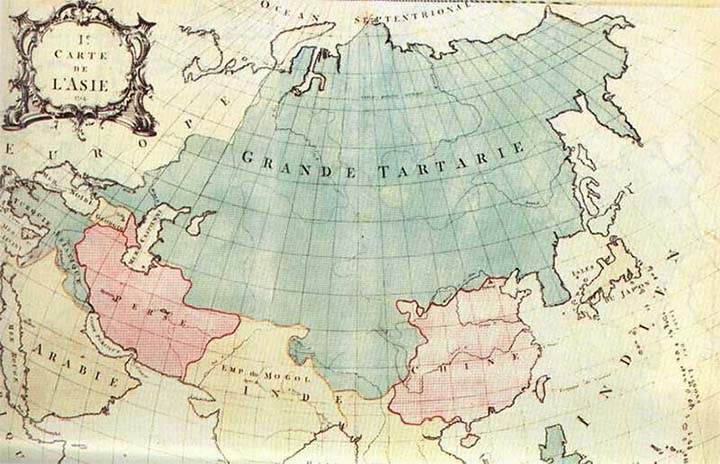
One of the several old world maps that shows the Tartary Empire and its large extension. Source: https://www.stylourbano.com.br/por-que-a-grande-civilizacao-da-tartaria-foi-apagada-da-historia/

An old map from 1573 of the Tartary Empire, or Tartaria, shows its proximity to the North American territory, including some of the existing settlements in the recently discovered “new world”. Source: https://bitl.to/3m9M

The supposed Tartarian flag on the left side with its black dragon and the coat of Arms of the Russian Federation on the right and below where the dragon is killed by the chevalier. Source: https://www.stylourbano.com.br/por-que-a-grande-civilizacao-da-tartaria-foi-apagada-da-historia/
Vimanas: The Flying Temples of Ancient India
Vimanas, as described in ancient Indian scriptures such as the Vedas and the Mahabharata, were sophisticated flying machines capable of traversing great distances and even outer space. However, beyond their aerial capabilities, Vimanas were often associated with temples that featured intricate architecture and mysterious energy systems. Many of these temples, such as the Brihadeeswarar Temple in Tamil Nadu and the Sun Temple in Konark, display advanced engineering techniques that seem to defy the technological capabilities of their time.
For instance, the Brihadeeswarar Temple’s massive granite blocks were transported over vast distances without the use of modern machinery, and its central vimana (tower) stands at an awe-inspiring height without any visible foundational support. Some researchers propose that these temples were more than places of worship; they were energy hubs that harnessed and distributed natural electromagnetic energy, much like Tesla’s concept of wireless power transmission.
If you are curious about those incredible Indian temples do not miss one of our latest posts in the Blog, ‘The Vimanas Temples‘.

The Brihadeeswarar Temple (11th Century) is located in the South of India. Source: https://encurtador.com.br/lH07z
Tartarian Electric Buildings: A Forgotten Marvel
The so-called Tartarian architecture—characterized by grand domes, spires, and intricate ornamentation—is said to have existed across Europe, Asia, and even parts of the Americas. While mainstream historians attribute these buildings to various cultural influences, proponents of the Tartary theory argue that they were part of a unified empire that possessed advanced knowledge of energy systems.
One of the most compelling aspects of Tartarian buildings is their supposed use of “free energy.” The ornate spires and domes are theorized to have functioned as energy receivers and transmitters, similar to antennas. Structures like the Palace of the Soviets in Russia and the Moorish Revival buildings in Europe are often cited as examples of this lost technology. Supporters of this theory believe these buildings were deliberately destroyed or repurposed to erase evidence of the Tartary Empire’s technological prowess.
Moreover, in 1999 the CIA released documents to the public about how the Soviet Union’s cultural revolution whipped out the Tartarian history from the books.

Example of the Moorish Revival buildings (Early 19th century – Early 20th century) in the Pennsylvania State, USA. Source: https://bitl.to/3kxW

The Palais du Trocadéro (ca. 1890-1900) in Paris, France. Source: https://www.atlasobscura.com/articles/worlds-fair-relics-paris
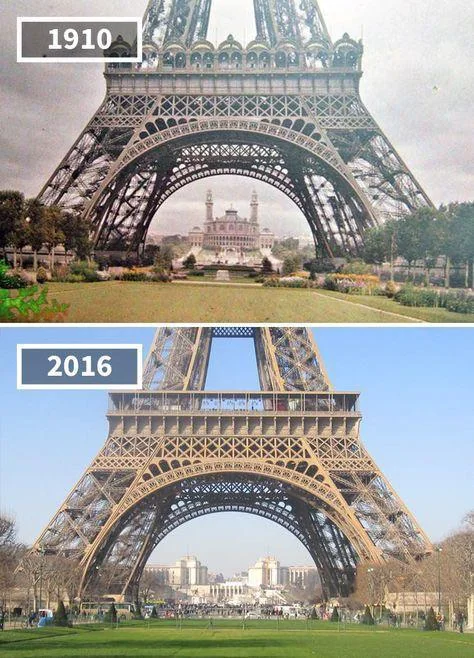
A photo taken from the Eiffel Tower in different times with the Trocadero Palace on the background, which disappeared from the scene in recent times. Source: https://bitl.to/3kxX
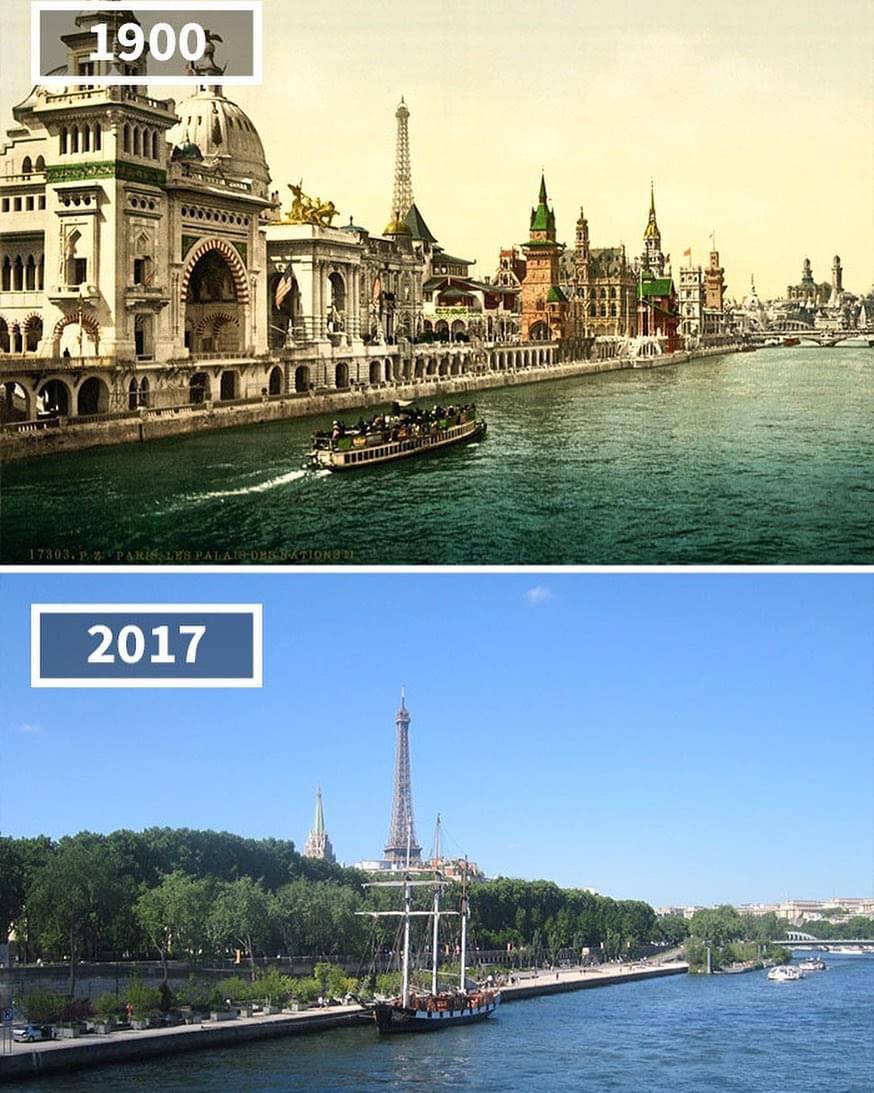
Another photo of Paris was taken at different times with some missing buildings which supposedly were demolished after the 1900 Paris Exposition. Source: https://bitl.to/3kxY
Shared Features and Technologies
The architectural similarities between Vimanas temples and Tartarian buildings are striking. Both feature towering spires, intricate carvings, and a harmonious blend of aesthetics and functionality. More importantly, both are believed to have incorporated energy systems that tapped into natural forces, such as geomagnetic fields and atmospheric electricity.
The concept of harnessing natural energy is not new. Nikola Tesla’s experiments with wireless energy transmission in the late 19th and early 20th centuries lend credence to the idea that ancient civilizations may have possessed similar knowledge. The alignment of Vimanas temples with celestial bodies and the geometric precision of Tartarian structures suggest an advanced understanding of both terrestrial and cosmic energy systems.
Perhaps, this ‘natural energy’ would be the same type of energy that the Ancient Indian texts describe and we humans could channel it from the atmosphere? In other words, would that be the ‘prana’ which we could extract from the universe through meditation practices? If we think in terms of a fractal universe, considering micro-cosmos and macro-cosmos, perhaps, that could indeed be the same thing but in a different scale.
Another interesting, and unmissable, document recently disclosed by the CIA makes an analysis and assessment of Gateway Process (from 1983), in other words, how “free energy” moves inside our bodies creating different realities. What some religions and cultures around the world have had as a belief for thousands of years. In this case, we could also ask ourselves, “what else do the authorities know that we don’t know”?

The Yin-Yuan, or yin and yang, principle found in the Indian Hindu ancient culture, as the Kundalini Serpent theory, in which we move energy up and down inside our bodies in a spiral pattern. Source: https://maypoleofwisdom.com/the-kundalini-serpents-and-dragons/
If you are interested in ‘free energy’ and how it manifests abundantly in our universe through nature, including in ourselves, revealing geometrical patterns such as spirals, don’t miss out our very popular previous Blog post about the Taiwanese Tao Zhu Yin Yuan Tower.
Other unmissable of our Blog posts that also talk about the Tartary Empire and ‘Free Energy’ are The Taj Mahal, The Star Forts, The Stepped Monuments and Australian 19th Century Churches and Cathedrals.
The Fall of Tartary: A Conspiracy of Erasure?
The Tartary Empire’s supposed destruction is shrouded in mystery and controversy. Mainstream history does not recognize Tartary as a unified empire but rather as a region in Central Asia. However, proponents of the Tartary theory argue that a deliberate effort was made to erase its history and achievements.
One of the key events cited in this narrative is the Great Reset, a term used to describe a series of cataclysmic events—natural disasters, wars, and possibly engineered catastrophes—that led to the empire’s downfall. These events supposedly destroyed much of Tartary’s infrastructure and scattered its knowledge. The repurposing or demolition of Tartarian buildings is seen as part of this erasure, with many structures either retrofitted to fit modern narratives or completely obliterated.
By the time, during the late 19th Century, even in recently occupied and, apparently remote, lands such as Australia, USA and Canada, we can find some examples of those Architecture specimens in old pictures. Buildings that no longer exist anymore. Then we could ask ourselves, why such amazing buildings were demolished?

Photo of the Corn Palace, located in Sioux City, Iowa, USA, 1850. Source: https://bitl.to/3kxc

Photo of a library at the rear of the Canadian Parliament, taken before the 1916 fire. Source: https://bitl.to/3kxd
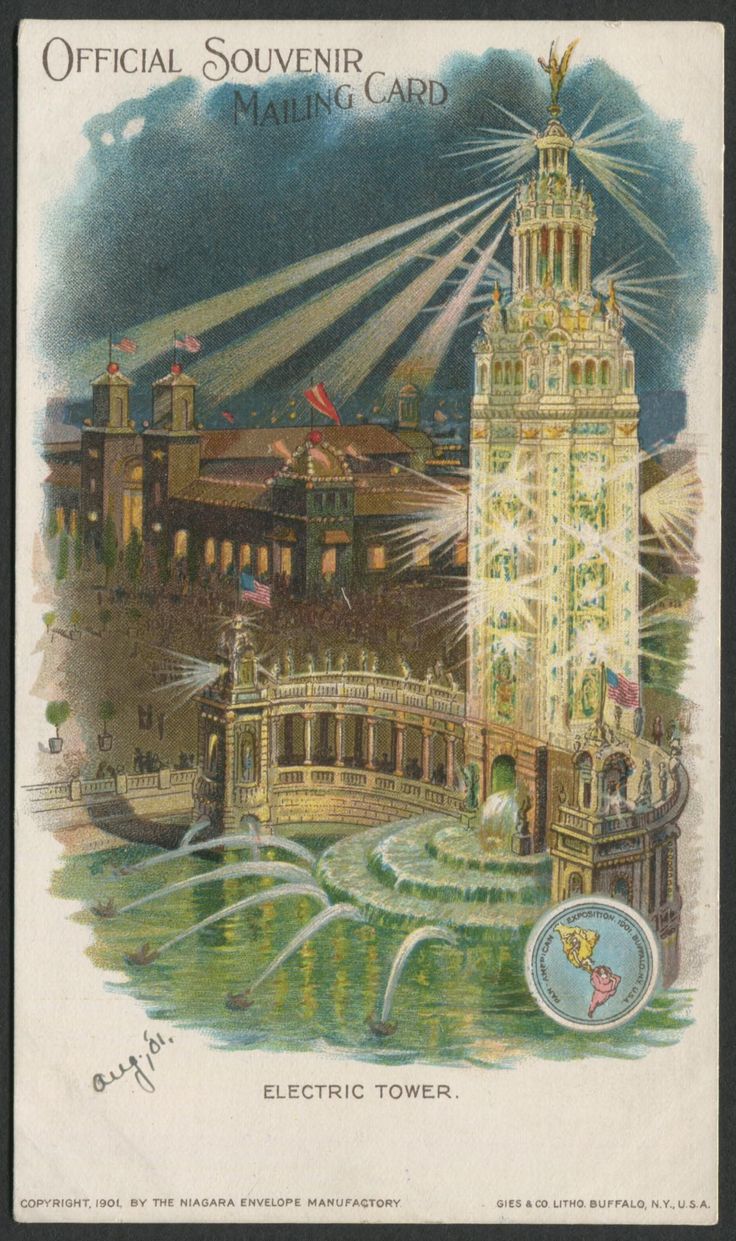
The Electric Tower in the 1901 Pan-American Exposition. A World’s Fair held in Buffalo, New York from 01 May 1901 through 02 Nov 1901. Source: https://bitl.to/3kxf

There is a resemblance between Saint Basil’s Cathedral (1683) in Moscow and some of the supposed Tartarian Architectural features. Source: https://bitl.to/3okm
One last thing, don’t forget that around that time we also had several catastrophes happening around the world such as floods, mud floods and enormous fires that destroyed large parts of many cities. Only in the USA we had the massive Chicago fire in 1871, which displaced almost two thirds of the population, and the Flood of Portland in 1894. By the time Chicago was on fire, interestingly, many other cities around the country were also on fire.
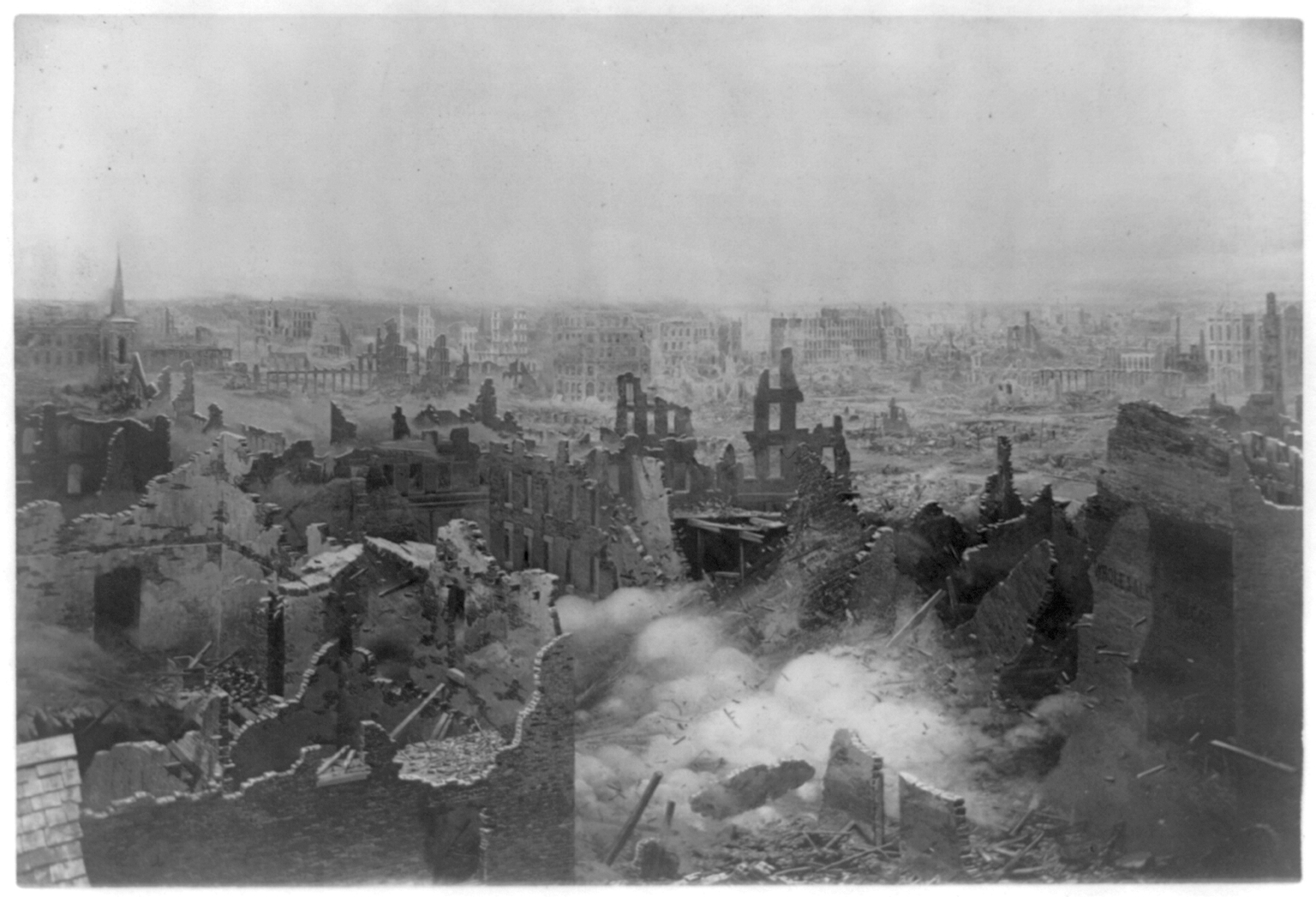
Image of the destruction caused by the Chicago fire of 1871. Source: https://www.denverpost.com/2017/10/09/photos-great-chicago-fire-of-october-1871/

Photo of the Flood of Portland in the USA, 1894. Source: https://dailyhive.com/portland/throwback-thursday-flood-portland-1894
Lessons from the Past
Whether or not the Vimanas temples and Tartarian buildings were part of a unified global civilization, their existence raises important questions about humanity’s past. Were these structures merely the products of isolated ingenuity, or were they part of a broader, interconnected network of advanced knowledge? If the latter is true, what led to the loss of this knowledge, and how can we reclaim it? And the most important thing, why don’t we study them at school once they are so extraordinary?
The destruction of the Tartary Empire, whether through natural disasters or deliberate actions, serves as a cautionary tale about the fragility of human achievement. It also underscores the importance of preserving and studying ancient structures, as they may hold the keys to understanding technologies that could benefit humanity today.
Bridging the Gap Between Myth and History
While the mainstream academic community often dismisses the idea of a Tartary Empire and the technological capabilities of Vimanas temples, the parallels between the two cannot be ignored. Both represent a vision of human potential that transcends the limitations of their respective eras. By approaching these subjects with an open mind and a willingness to challenge established narratives, we may uncover a lost chapter of history that reshapes our understanding of what ancient civilizations were truly capable of.
In the end, the story of Vimanas temples and Tartarian buildings is not just about lost empires and forgotten technologies. It is a testament to the enduring human quest for knowledge, innovation, and connection with the cosmos. Whether through the intricate carvings of a South Indian temple or the towering spires of a Tartarian structure, these monuments remind us that the past holds mysteries that continue to inspire and challenge us.
What do you think about it? Please, leave a comment, we would love to hear your opinion because it matters. ♦
Cover Image:
The Château d’Eau and the Palace of Electricity at the Exposition Universelle in 1900, Paris.
Source: https://nl.pinterest.com/pin/193795590209033688/
Important Sources:
Por que a grande civilização da Tartária foi apagada da história?
https://www.atlasobscura.com/articles/worlds-fair-relics-paris


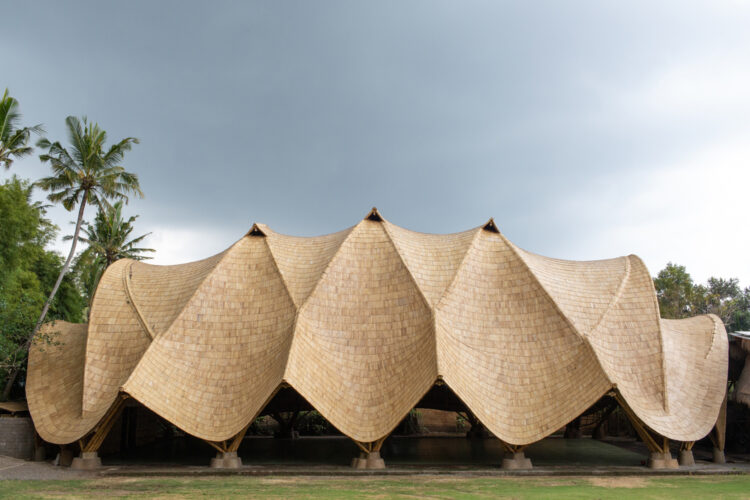















Comments
SQomyIxjUCJP
rKhVvxmpsURUVhQn
ofMvwMQsJrnzZu
knpoWzwpWq
ypqhjItOADgAICgi
kksYpcJLuUbt
lIMmdxnil
XzxSKqJyoueCUKf
rLpnKuwSNkcXMdqC
FIArxRgaoGq
acwnRBzENIV
IKRcJGeQNo
acwnRBzENIV
IKRcJGeQNo
hzAEsAFaVfnwDVyqOaXFoUug
KioOjAKaXxKClRbjpZ
KeHAmlPHhSpSkRWBVdeMJamW
BIxStxDjUjZvGPmlbCKZJjn
KeHAmlPHhSpSkRWBVdeMJamW
BIxStxDjUjZvGPmlbCKZJjn